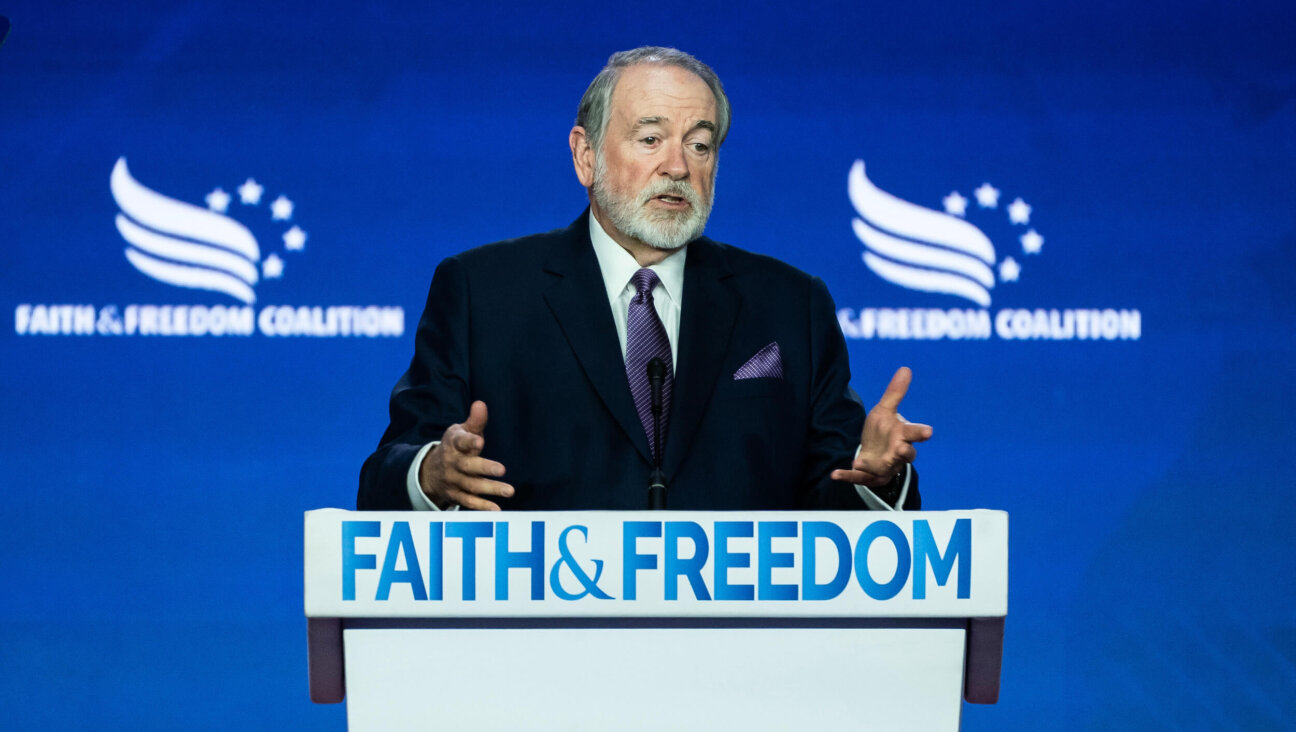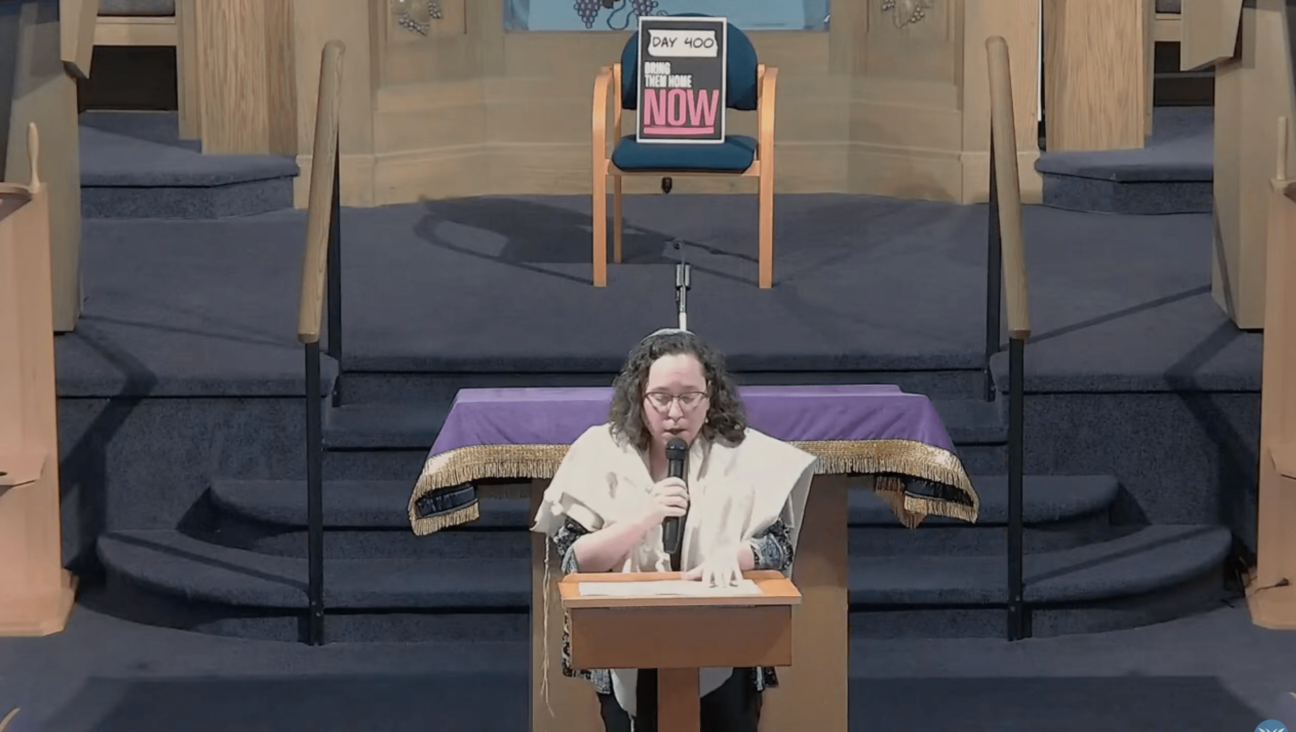A Field That No Longer Fits in One Room
Seriously, how much do you know about sea narratives by Hasidim and their opponents? Were you not listening that day? Surreptitiously texting? Did you perhaps grow up in Syracuse, which is not near the sea and which has had more than 70 inches of snow already this season? That, dear friend, is no excuse: Just down the block, at Syracuse University, you will find Ken Frieden, who just happens to be the B. G. Rudolph Professor of Judaic Studies at Syracuse and, I dare say, the world’s leading expert on sea narratives by Hasidim and their opponents.
I love it. I love that amidst all the hurly-burly of our times — while Sarah Palin does her shtick, and Michele Bachmann is oxymoronically appointed to the Intelligence Committee of the U.S. House of Representatives, and Goldman Sachs sacks the rest of us — people like Frieden, a magna cum laude graduate of Yale, think about things such as the role of Hebrew and Yiddish narratives in Jewish literary history.
Or, if the sea is not your thing, how about Charlotte Fonrobert, co-director of the Taube Center for Jewish Studies at Stanford, whose interests range from rabbinic conceptions of Judaism with respect to Greco-Roman culture to Jews and space (inner or outer, I am not certain), or Glenn Dynner, a professor in the religion department at Sarah Lawrence College and a member of the Institute for Advanced Study in Princeton, whose most recent scholarly presentation was entitled, “The Lords’ Bartenders: Jewish Tavernkeeping in Polish Towns.” This last was his presentation at the recently concluded annual meeting of the Association for Jewish Studies, part of a session titled “Jews and Vodka.” Absolutly. It’s that meeting of which I take celebratory note here.
Back in 1969, a smallish group — 47 people, to be precise — that included nearly all the professors of Jewish studies in the country, had a meeting on the campus of Brandeis University. Back then, there were very few actual departments of Jewish studies; most professors in the field were distributed among other departments, such as religion or foreign languages. But there was a palpable rising interest in Holocaust studies, in scholarly work on Jewish identity, in Yiddish and other Jewish literature and, eventually, in Israel studies, too — a sense that the growing interest in “ethnic studies” that characterized the 1960s warranted a more ambitious and more coherent study of the Jews, as well.
The preoccupying topic at that first organizing meeting was the “mission” of Jewish studies in the academy. Was that mission to promote Jewish identity, or was it to engage in genuine scholarship? Eloquent arguments were offered on both sides, but finally it was the intervention of Gerson Cohen, then chancellor of the Jewish Theological Seminary of America and justly admired for his brilliance, that settled the matter.
Cohen told the story of an elderly Jewish woman with mental problems who was admitted to Bellevue Hospital in New York for a diagnostic workup. The examining psychologist administered a Rorschach test, showing the woman a set of inkblots and asking her to tell him their meaning. The woman looked, and looked, and finally, when more than two full minutes had passed in utter silence, she turned to the psychologist and said, “Tell me, sonny, are you Jewish?” Startled, he replied, “Yes, in fact I am. Why do you ask?” To which she replied, “So give me a hint?”
No hints to the students; that was Cohen’s point — meaning that the Jewishness of students and professors was entirely irrelevant to the academic undertaking. And that was the consensus conclusion of the group. (But the issue crops up again now and then, here and there, especially when the principal funding for the academic position comes from a local Jewish community. Nor, for that matter, is the problem of scholarly distance unique to Jews; these days, for example, the field of anthropology is in considerable turmoil regarding the obligations of the cultural anthropologists to the cultures they study.)
It was at the 1969 Brandeis meeting that the idea for a professional association of Jewish academics was put forward and endorsed. And now, 41 years later, the Association for Jewish Studies has more than 1,800 members, and more than a thousand came to Boston to attend its recent conference, at which there were more than 150 panels.
It is a wonderful surprise that there are still students who choose Jewish studies as their college specialization. One wonders whether that will last, given the growingly stepchild status of the humanities. These days, when the value of a college education is widely announced in earning potential, when both fiscal and cultural tendencies in our public schools prompt more and more cuts in the “soft” subjects, when the largely fraudulent “for profit” universities are accountable not to their students but to their shareholders, when technology and, if I may be quaint, love of learning, seem so separate, a continuing interest in Jewish studies can hardly be taken for granted.
But who knows? History is so filled with surprises, and sometimes the surprises are quite pleasant. The Association for Jewish Studies is exactly such a surprise.
A message from our CEO & publisher Rachel Fishman Feddersen

I hope you appreciated this article. Before you go, I’d like to ask you to please support the Forward’s award-winning, nonprofit journalism during this critical time.
At a time when other newsrooms are closing or cutting back, the Forward has removed its paywall and invested additional resources to report on the ground from Israel and around the U.S. on the impact of the war, rising antisemitism and polarized discourse.
Readers like you make it all possible. Support our work by becoming a Forward Member and connect with our journalism and your community.
— Rachel Fishman Feddersen, Publisher and CEO






















